Every other spring, the who’s who of the creative sector descend upon La Serenissima’s gondola-graced canals for the Venice Biennale, or, as it’s unofficially known; the Olympics of the art world. This year’s show, titled ‘Stranieri Ovunque – Foreigners Everywhere’, explores what it means to be a foreign in the broadest sense. ‘Wherever you go and wherever you are, you’ll always meet foreigners…you too are foreign to something or someone, outside or inside you,’ commented Adriano Pedrosa, the Brazilian curator helming this year’s festival, who is making his mark as the first Latin American – and openly queer – curator in the exhibition’s 129 years.

‘Foreigners everywhere’ is also an apt description of Venice during preview week, where an influx of languages and accents could be heard across parties, panel talks and prosecco-fuelled openings across the city’s palazzi. Outsider, Indigenous and LGBTQ+ artists receive an overdue platform this year, making the 60th edition of the Biennale one of the most diverse yet; but the spectre of war, climate change and political division hangs heavy over it all. With 331 artists and collectives included in this year’s exhibition, as well as a considerable number of collateral events, there’s a lot to see. Thankfully, we’ve done the leg work so you don’t miss out on this year’s must-see exhibitions (and must-stay hotels).
FOR FIRST-TIMERS
Welcome, young grasshopper, we’ve warmed your seat. First lesson? History. The formal Biennale takes place in the Giardini, a park commissioned by Napoleon in 1807 to provide much-needed green space for the dense floating city. Here, you’ll find 30 permanent national pavilions, designed by renowned architects like Josef Hoffmann (Austria pavilion) and Carlo Scarpa (Venezuela pavilion).
Queuing begins early at the German pavilion, so it’s worth doing first, though you might consider bringing a face-mask. Through a series of dusty rooms, Ersan Mondtag stages an unsettling memoir based on the life of his Turkish grandfather who arrived in Germany as an immigrant and later died from asbestos poisoning as a result of poor work conditions. The installation is full of Wagnerian drama, but intensely claustrophobic. Luckily, Mondtag shares the space with Yael Bartana, whose sci-fi projections of a digitally rendered spaceship propose the idea of escape. Australia takes home this year’s prestigious Golden Lion Award for Archie Moore’s memorial-installation kith and kin, which traces the trajectory of his Aboriginal relations over a 65,000-year span.
In the Egyptian pavilion, Wael Shawky presents a dreamlike, operatic parable of anti-colonial uprising. Actors sway like puppets and an elaborate – but slightly off-kilter – set lends it the feel of a surrealist school play. Denmark uses its pavilion to host Greenlandic artist Inuuteq Storch, whose Rise of the Sunken Sun is a stark but tender photographic essay soundtracked by an ambient score. In Arsenale, whose shipyards house a number of other countries, Ireland stands out. Represented by Eimear Walshe, the multi-channel video installation stages soapy, dramatic encounters between Irish archetypes who navigate between conflict and pleasure as they draw upon the country’s complex history of sexuality, property and state. Oh, and they do it in gimp masks.
WHERE TO STAY

Nolinski Venezia, Library bar
A stone’s throw from St Mark’s square, Nolinksi Venezia makes a most central base for first-timers looking to explore the city, and captures the spirit of La Serenissima with its Carnival-inspired colour palette, Doge-worthy dining space, book-flanked Library Bar and gaze-worthy views from the rooftop’s Roman bath.
FOR TRADITIONALISTS
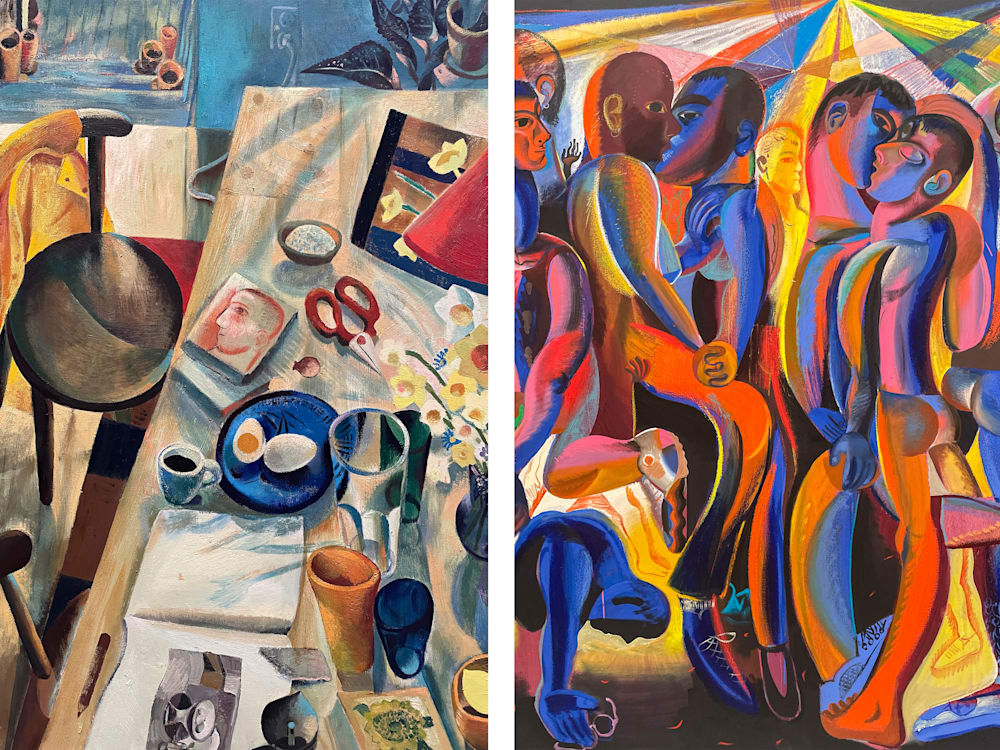
Louis Fratino, April (after Christopher Wood) / Louis Fratino, Metropolitan
You’re the kind of person who adores Old Masters. You probably have a National Gallery membership and a print of Gustav Klimt’s The Kiss hanging in your living room. You love a white-cube set up, and appreciate a good frame. Haters will say the world’s largest contemporary art exhibition might not be for you – but they’d be wrong. Especially this year, where 55 per cent of the artists featured in Pedrosa’s central exhibition are, well, dead.
The exhibition is split into halves; the Nucleo Storico and the Nucleo Contemporaneo. The former challenges Modernism’s Eurocentric narrative by highlighting the work of 20th-century artists from Latin America, Africa, the Middle East and Asia. Here, rooms of salon-style glass displays show abstract art and portraiture. Most of the artists included here are somewhat unknown, and that’s precisely the point. I found myself particularly drawn to Ahmed Morsi’s abstracted self-portrait and Bhupen Khakhar’s oil painting Fishermen in Goa – one of the first Indian paintings to address societal attitudes to homosexuality.
In the Nucleo Contemporaneo, Pablo Delano’s The Museum of the Old Colony reflects on Puerto Rico’s social and economic history through documentary-style films, archive photos and objects. Louis Fratino’s neo-cubist paintings depict everyday scenes– some quiet, others triumphant – of queer domestic life; and Hong-Kong-born artist Isaac Chong Wai draws a crowd with his choreographed performances, where dancers cradle, caress and collapse into each other in a powerful metaphor for solidarity. Taking up two pastel-coloured walls in the Arsenale, River Claure’s photographs present a magical-realist re-staging of Antoine de Saint-Exupéry’s The Little Prince, snapped alongside Andean communities. And throughout it all are Claire Fontaine’s neons, which hold-up the theme in all its multilingual interactions.
WHERE TO STAY
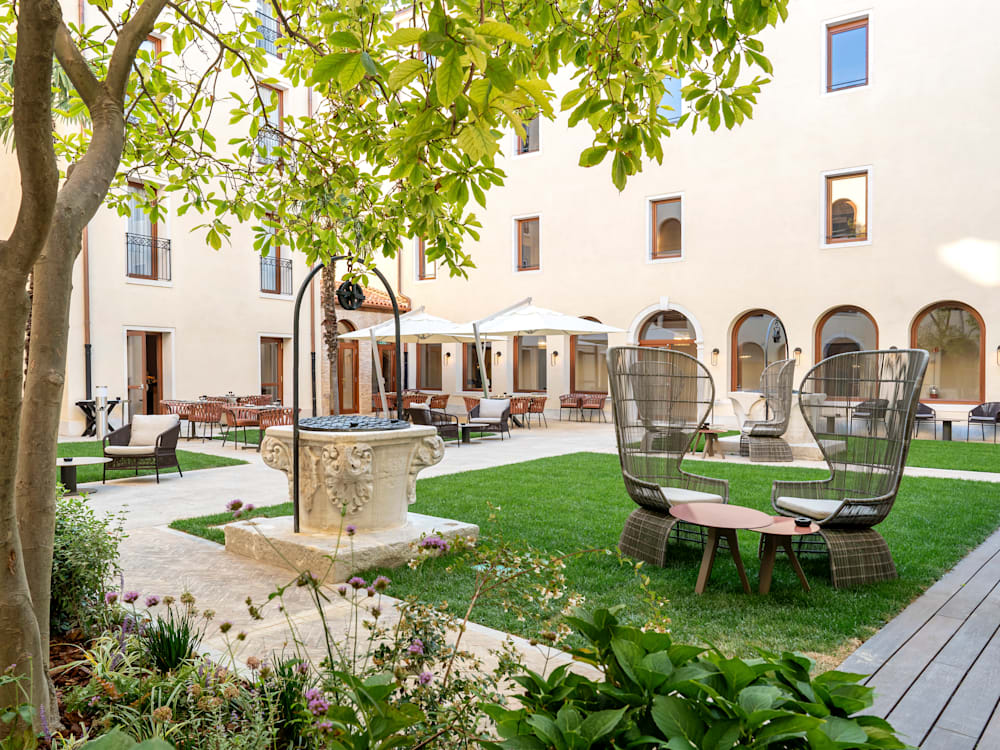
Ca’ Di Dio
A Venetian classic in the heart of the Biennale’s Castello quarter, Ca’ Di Dio is steeped in tradition, with calming courtyards, polished marble and expertly preserved frescoes. But much like Pedrosa’s central exhibition, there’s just enough modernity to keep things relevant; rooms are clad in upholstered panels, with sleek wooden accents and colourful, contemporary Murano glass fixtures.
FOR SEASONED SPECTATORS
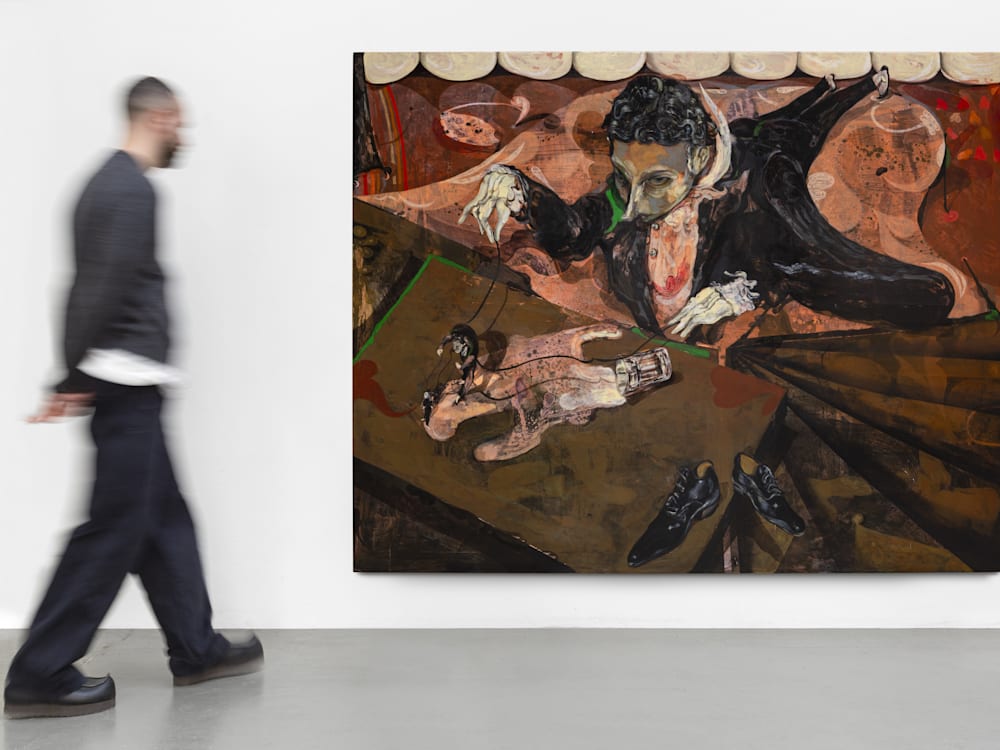
Guglielmo Castelli, Sempre Aperto Teatro
So, it’s not your first rodeo and you’re searching for something beyond the Biennale walls. To satiate art-hungry audiences, curators have taken it upon themselves to fill the city’s churches, empty spaces and permanent galleries with some excellent artworks in a number of independently organised, but officially approved, collateral events.
In an unassuming calle off Riva degli Schiavoni – the city’s main canalside stretch – the Peter Hujar Foundation presents Portraits in Life and Death, a series of 41 black-and-white photographs originally published in a 1976 book of the same name. While half the collection is populated by portraits of New York’s downtown scene during the 1970s and 80s – Fran Lebowitz, John Waters, Susan Sontag – the other half shows the mummified bodies of the Palermo catacombs. Understandably, this juxtaposition caused controversy at the time – but that wasn’t of much concern to Hujar. ‘Why not?’ he commented in response to his critics, ‘that’s life!’
Guglielmo Castelli’s show Improving Songs for Anxious Children brings together paintings, textiles and knitted sculptures that read like childish imaginings laced with violence. Dreamlike with his layers and shadows, Castelli is a rare talent and sure to keep on rising – if there’s one show to see in the north of the island, make it this. Smaller but worthy of mention are Jure Kastelic paintings at Mare Karina, which mirror our desires back to us in an unsettling affront, and Berlinde De Bruyckere’s soulful, faceless angels (made from wax, animal skins, hair, textiles, metal and wood), which are spread across the abbey of San Giorgio Maggiore as part of her show City of Refuge III.
WHERE TO STAY
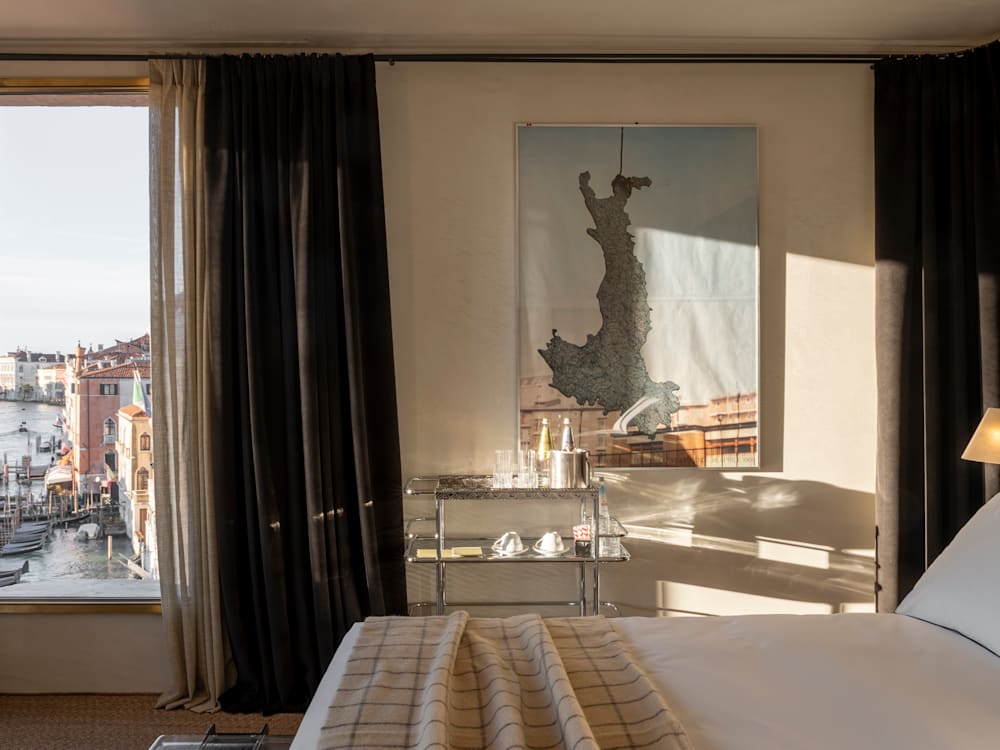
The Venice Venice Hotel
There’s nothing formulaic about the Venice Venice Hotel, a manifesto for a new kind of lagoon-dweller in the guise of a hotel. This avante-garde canalside spot has all the trappings of your grand Venetian dame – terrazzo floors, sweeping arches and frescoes galore – but despite being the oldest palazzo on the Grand Canal, this surprising stay is full of youthful energy, and has a serious collection of modern and contemporary artworks, too.
FOR OUTSIDE-THE-BOX-ERS

Pierre Huyghe, Liminal
There are suitably offbeat offerings for those who throw out the rule book altogether when it comes to art, favouring shows that are well off the beaten Biennale track. Our tour of the weird, wild and often heartwarming highlights of this year’s extra-curricular affairs starts at Punta Della Dogana. Once the city’s maritime custom house, this space is marooned in darkness thanks to Pierre Huyghe, the French artist known for his boundary-defying excursions into the near and distant future, the human and non-human, the perceptible and the imperceptible.
If that all sounds rather vague, let me spell it out: there’s a video of a monkey wearing a mask of a girl while hanging around Fukushima’s long-abandoned spaces; there are faceless people who appear out of nowhere; there’s an aquarium where a hermit crab carries a resin replica of Constantin Brâncuși’s Sleeping Muse as its shell. Perhaps most disturbing is his foreboding film Camata, which shows machine-operated robots analysing a human skeleton among the brutal conditions of the Atacama Desert – the oldest and driest in the world.
In Fondazione Prada, Miuccia’s Venetian outpost, Christoph Büchel is causing a stir by transforming the 18th-century palazzo into a bankrupt pawn shop to interrogate how debt is used as a lever of control and exploitation. This investigation extends into the digital realm, where the artist has created a new cryptocurrency called Schei, promoted by a fake TikTok influencer, with profits said to be redistributed among Venice’s inhabitants. Finally, one of the most poignant – and unexpected – events of this year’s edition is the debut of Holy See, the Vatican pavilion, which is situated inside a women’s prison (once a convent for reformed sex workers) on the island of Giudecca. It’s the same prison that US artist Mark Bradford has been working with for the best part of a decade in his collaborative project Process Collettivo, and full of disquieting works made by the likes of Maurizio Cattelan, Simone Fattal and Sonia Gomes in collaboration with inmates.
WHERE TO STAY
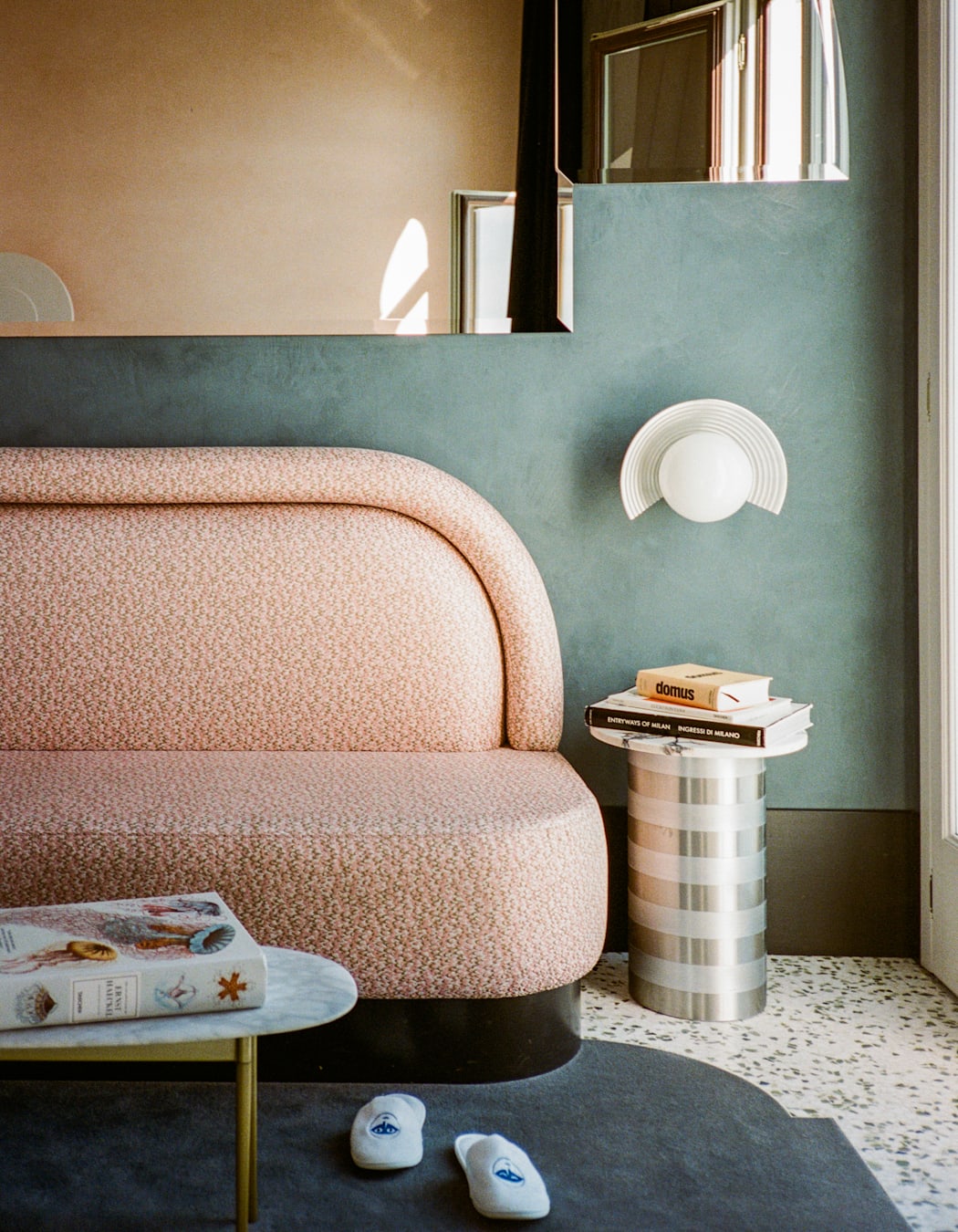
Il Palazzo Experimental
Like Huyghe’s liminal spaces and Buchel’s crypto campaigns, Il Palazzo Experimental is all about edge. Not least in terms of geography, perched on Zattere’s lesser-travelled promenade. Inside, Dorothée Meilichzon’s interiors merge art deco details with kitsch-y candy stripes; the hotel’s Experimental Cocktail Club gets weird with its menu of Sazeracs and spritzes, and rooms pay homage to the city’s native son, Carlo Scarpa, with tons of terrazzo and recurring arch motifs.
Explore our full collection of Venice hotels, or discover the city’s best bacari. After all that art, you must be hungry…

